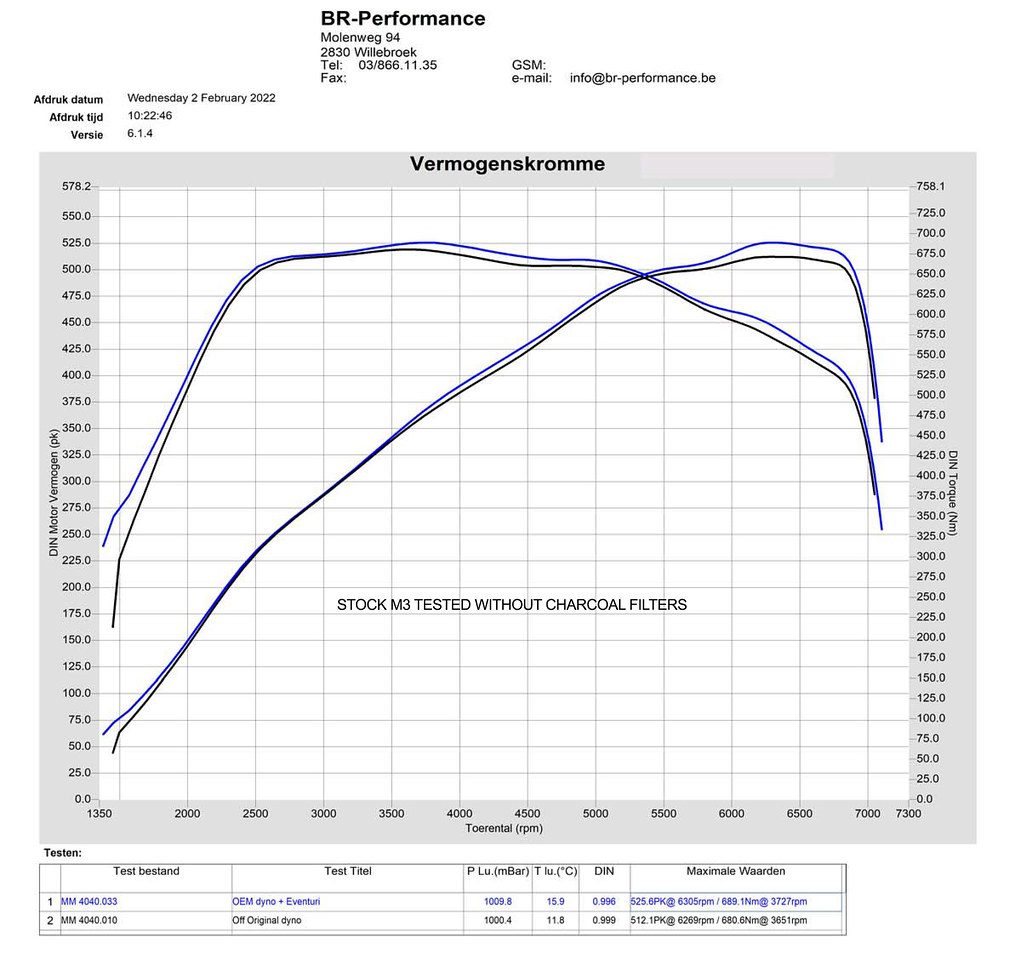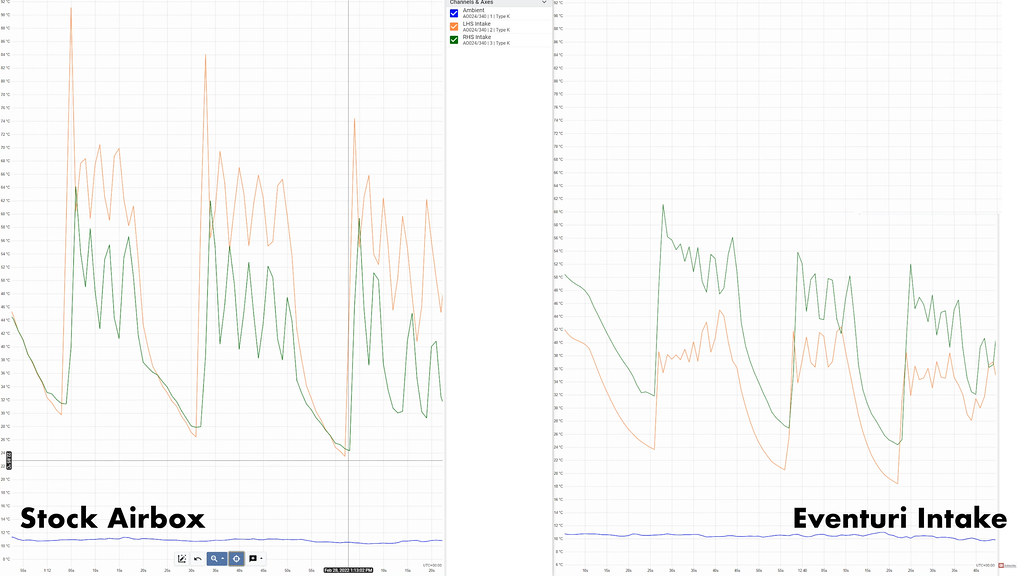
Eventuri Intake for G80 M3 G82/G83 M4
Eventuri Intake for G80 M3 G82/G83 M4
Couldn't load pickup availability
- Fully secure checkout
- Trusted
- Rated and reviewed
Customer Reviews
Question about this product?
We're happy to help.
Shop safely
Secure your shopping experience with various safe and trusted payment methods.
PRODUCT DESCRIPTION:
Performance Gain: 13-18hp, 12-16ft-lb (Stock Tune)
Turbo Inlet Area Increased up to 160%
Filtration Area Increased up to 40%
Presenting an intake which truly sets a benchmark for the BMW G8X M3/M4 platform. We have carried out intensive R&D to develop an intake which not only improves on the stock M3/M4 but also is future proof in its capacity to cater for high powered builds well in excess of 1000hp. Our system is a complete redesign from the airboxes to the turbo inlets with the aim of reducing pressure loss while increasing the flow rate and keeping inlet temperatures low. We have maximized the usage of the available space to employ 2 custom made filters with a 40% larger filtration area than stock. These are used in our Patented Venturi housings to smoothly funnel the air to the turbo inlets. The inlets themselves are up to 160% larger in cross sectional area than stock and are designed with an advanced dimpled inner surface to reduce frictional losses between the flow and the wall boundary. By allowing a “cushion” of air at the wall surface, airflow is able to move through the inlets at higher flow rates with reduced pressure loss. This allows the turbos to draw air with less resistance and therefore reduce the wastegate duty cycle resulting in higher overall performance.
The Eventuri Difference
The G8X M3/M4 Eventuri system uses our Patented Carbon Fiber Housings with our Gen 2 bespoke filters, which provide an aerodynamically efficient airflow path from the filter to the turbos. Not just another cone filter with a heat shield but a unique design which invokes the Venturi effect and maintains laminar flow conditions to reduce the drag on the turbo. You can read more about the housing design and how it works HERE.
Dyno Testing
This intake has been independently dyno tested by BR Performance in Belgium. Tests were done back to back against the stock airbox and several runs were taken with each configuration. The car tested was without charcoal filters. We took the best results from the stock airbox and the best from the Eventuri system. The dyno results show a consistent gain throughout the RPM range which can be attributed to the turbos reaching peak boost earlier and with a lower wastegate duty cycle due to the higher efficiency of the intake system. This gain is despite the dyno cell temperatures rising from 11.8 deg C for the stock system tests to almost 16 deg C for the Eventuri tests. The performance gain translates on the road to increased part throttle and full throttle response with the car pulling much more eagerly to the redline.

IAT Testing
Turbo charged cars can build up a lot of engine bay heat which can be detrimental to performance if the intake system is not sealed against it. Even with intercoolers and charge coolers, it is important to minimize Inlet Air Temperatures (IATs) as these cooling devices work with an efficiency ratio so the output air temperature is affected by the input air temperature. Derestricting the intake by using open cones, even if heat shielded will inevitably pull in hot air from the engine bay. Our system being fully sealed solves this problem while still derestricting the flow path using bigger volumes. To demonstrate, we data logged air temperatures using thermocouples just before each turbo. Comparisons were taken between stock and Eventuri on the same day with the same ambient conditions. Our M3 was allowed to heat soak and then it was accelerated from 30mph to 90mph in 6th gear to measure the change in temperature across each run. At 90mph, throttle was released and brakes were applied to 30mph at which point the car accelerated again to 90mph. A total of 3 pulls were made with both intake configurations.
The first graph shows the temperatures on before both turbos with the stock airbox on the left and the Eventuri intake on the right. Due to scaling, the axes are not perfectly matched between both graphs but the numbers can be clearly seen. As expected, the RHS of the intake showed similar data between stock and Eventuri since the flow path and materials are similar. However, the LHS intake shows a significant improvement in IAT for the Eventuri. This can be seen in the second graph where the 2 charts are overlaid. On each successive pull the Eventuri shows a lower IAT as compared to stock and also the spike in temperature as throttle is lifted is significantly lower with the Eventuri. This difference is down to the more direct flow path with the Eventuri and also the materials used in the turbo inlet.









Shopping Safely
At our Shopify store, we prioritize your safety and security. Here's how we ensure a secure shopping experience:
1. Secure Transactions: We use advanced encryption to protect your personal and payment information, ensuring it is safely transmitted and safeguarded.
2. Trusted Payment Gateways: Our store integrates with trusted payment gateways, ensuring your transactions are processed securely and efficiently.
3. Data Privacy: Your privacy is our top priority. We follow strict data protection policies to keep your personal information confidential and secure.
4. Secure Platform: Shopify provides robust security features and continuous monitoring against vulnerabilities, ensuring a safe shopping environment.
5. Verified Merchants: We are a verified merchant on Shopify, committed to providing authentic and high-quality products.
6. Transparent Policies: Our clear return, refund, and shipping policies provide peace of mind, knowing we stand behind our products.
7. Customer Support: Our dedicated customer support team is ready to assist with any concerns or questions you may have.
Shop confidently at our Shopify store, where your safety and satisfaction are our top priorities.
$2,995.00
Questions about this product?
Don't be a stranger.
Selling fast!
Get yours while you can.








